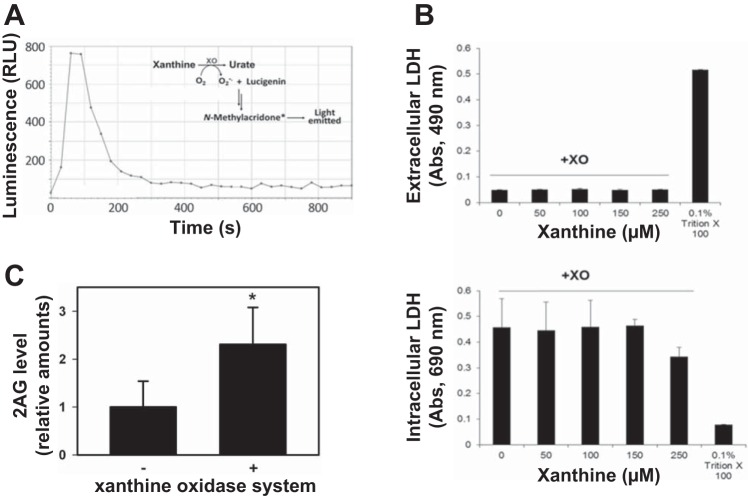Fig. 3.
Human THP-1 macrophages treated with extracellular superoxide via a xanthine oxidase system enhanced the amount of 2-AG made by the cells. A: the xanthine oxidase system liberates superoxide, which reacts with lucigenin to form the chemiluminescent product N-methylacridone*. The area under the curve is a measure of the amount of superoxide produced. LC-MS/MS analysis confirmed that the superoxide-specific oxidation product 2-OH-Et+ was produced when the oxyradical probe HE was added to the xanthine oxidase system (data not shown). B: on the basis of the LDH leakage assay, xanthine oxidase (XO)-derived superoxide was not cytotoxic to THP-1 macrophages following a 15-min incubation and can be used as a model of paracrine superoxide signaling (i.e., superoxide derived from the extracellular space). 0.1% Triton X-100 was used as positive control for cell death. Top: extracellular LDH. Bottom: intracellular LDH. C: THP-1 macrophages (pretreated with 1 μM PO for 30 min to inhibit 2-AG hydrolytic enzymes) were challenged with an extracellular xanthine oxidase system (10 min), which enhanced the production of 2-AG compared with the negative control. Values are means ± SD. *P < 0.05, Student's t-test.

